
La dictature autodestructrice du Système
20 mars 2013 – Comme l’on sait, le projet de prélèvement sur les comptes bancaires chypriote a installé une superbe pétaudière, avec bouilloire au bord de la crise de nerf, dans l’usine à gaz générale qu’est le Système. Hier, en fin de journée, le parlement chypriote a rejeté le plan proposé par le gouvernement, ouvrant une nouvelle phase de la crise dont certains jugent qu’elle peut conduire à des événements totalement incontrôlables et insaisissables. Ce 20 mars 2013, un article du Guardian notait : «One [commentator] said it was the opening of Pandora's Box; another saw events in the eastern Mediterranean country as the equivalent of the assassination of archduke Franz Ferdinand in Sarajevo.»
Nous avons effleuré un aspect déconcertant et exotique de cette crise avec quelques observation sur notre chère Sorcha Faal (voir ce 19 mars 2013). Nous allons plus loin dans notre démarche, d’abord en proposant diverses réactions à cette initiative, dont la vertu principale est de montrer, autant que les caractères étranges de la mesure envisagée, le flou et l’incertitude qui règnent quant à identifier précisément qui a décidé quoi, qui a exigé quoi et ainsi de suite... S'il y a bien dictature du Système, le moins qu'on puisse dire est que son efficacité de fonctionnement est pour le moins erratique et confuse, jusqu'à l'inversion de la chose à l'étape présente : le vote du parlement de Chypre a sanctionné une victoire sans conditions de la révolte populaire, à laquelle le Système avait ainsi offert une voie triomphale d'affirmation.
• Le site ZeroHedge.com a largement suivi l’épisode de ce week-end en diffusant plusieurs articles bien documentés, et renvoyant à l’habituelle qualité du site dans ses commentaires. Mark J. Grant résumait la situation au terme du week-end, le 18 mars 2013 : «There was no tax on the bank accounts in Cyprus. There still is no tax; the Cyprus Parliament has not passed it and will not vote on it until tomorrow so whatever action takes place it is retroactive. Next, this was not enacted by Cyprus. The people from Nicosia did not go to the Summit and ask to have the bank accounts in their country minimized to help pay the bills. Far from it; the nations of Europe, Germany, France, the Netherlands and the rest, demanded that this take place, a “fait accompli,” the President of Cyprus said and Europe annexes Cyprus. Let's be quite clear; the European Union has confiscated the private property of the citizens in Cyprus without debate, legislation or Parliamentary agreement.»
Sur le même site, Tyler Durden observe, le 18 mars 2013, citant la Royal Bank of Scotland (RBS), qu’il s’agit du “plus gros coup de poker” jamais joué ; que ce processus a toutes les chances de se répéter dans d’autres pays et que la seule réaction désormais possible est l’insurrection populaire. «[T]his stunning move in Cyprus is likely only the beginning of this process (which seems only stoppable by social unrest now). […] As RBS summarizes, “the deal to effectively haircut Cypriot deposits is an unprecedented move in the Euro crisis and highlights the limits of solidarity and the raw economics that somebody has to pay. It is also the most dangerous gambit that EMU leaders have made to date.”»
• Le 18 mars 2013 également, le site WSWS.org faisait, avec son habituelle précision, un compte-rendu général à la fois des faits et des premières réactions, notamment aux USA et dans les milieux européens. Il faut noter qu’il s’agit là aussi de réactions venues de personnalités et d’organismes qui se trouvent au cœur du Système, tant au niveau financier qu’au niveau politique.
«The response of the financial magazine Forbes was scathing, denouncing the “German-led group of EU officials” for “probably the single most inexplicably irresponsible decision in banking supervision in the advanced world since the 1930s.” Another Forbes columnist entitled his comment, “Welcome to Another Great Depression.” Business Insider noted the “multiple reports which indicated that Germany told Cyprus: Confiscate your depositors’ money or leave the euro zone. That’s a terrible political dynamic, and on top of Italy it exacerbates a bad overall political situation.” […]
»With Italy still lacking a viable government, Monti, in his role as caretaker leader, appealed to EU leaders to soften their austerity course or face the same fate. In a letter to the summit, he declared that the election result showed “public support for the reforms, and worse, for the European Union, is dramatically declining” as part of a “trend which is also visible in many other countries across the Union.” Luxembourg Prime Minister and European Council President Jean-Claude Juncker warned at the start of the summit, “I have big worries about the coming economic developments. I won’t exclude that we run the risk of a social revolution, a social rebellion.”»
• Aujourd’hui, ce 20 mars 2013, Ben Chu, dans The Independent, rapporte quelques précisions sur la confusion extrême qui règne à propos de la détermination des responsabilités de cette décision à l’origine…
«The eurozone was still embroiled in an acrimonious dispute tonight over whose idea it was to impose a tax on the savings of ordinary depositors in Cypriot banks… […] At the weekend, the Cypriot government briefed the media that Wolfgang Schauble, the German Finance Minister, and Christine Lagarde, the head of the International Monetary Fund, had been instrumental in pressuring Nicosia to impose the levy on small depositors as the price of the country’s €10bn bailout. “We didn’t expect such demand from our European partners” said Cypriot President, Nicos Anastasiades. But that interpretation of events was firmly denied by Mr Schauble earlier this week. […] A Reuters report on Monday suggested the idea had come from a desperate President Anastasiades… […] However, an insider account of the Brussels negotiations from the Wall Street Journal muddied the waters further by suggesting that the idea [..] was first put forward by the Economic Affairs Commissioner in Brussels, Olli Rehn.»
• Aditya Chakrabortty, qui est le chef de la rubrique économique du Guardian, livrait son impression générale le 18 mars 2013. Pour l’illustrer de façon décisive il utilise la fameuse formule «C’est pire qu’un crime. C’est une faute», citant ainsi Talleyrand pense-t-il, – mais à cet égard, l’on doit se souvenir que ce jugement lapidaire et fort bien dit sur l’exécution du duc d'Enghien est contesté quant à son auteur : «Le député de la Meurthe Antoine Boulay eut ce mot à propos de ce jugement : “C'est pire qu'un crime. C'est une faute”. Le nom de Boulay étant peu connu du grand public, cette phrase, attestée par des témoignages de l'époque, se retrouvera souvent attribuée à Fouché, et parfois même à Talleyrand.» De même que dans le cas d'origine, ce jugement appliqué à l’affaire chypriote pourrait également être distribué à plusieurs auteurs et, qui plus est, concerner nombre de coupables possibles sans qu'on n'en soit sûr d'aucun, alors que l’unanimité des réactions est remarquable… Dans tous les cas, voici celle de Chakrabortty, commentateur-Système s’il en est, comme le montre le qualificatif de “clown” qu’il applique à Beppe Grillo, sans doute au grand désappointement de Berlusconi.
«What's different this time is the nakedness of the Cyprus heist. The right can jump up and down at a massive infringement of property rights. The left can fulminate at the obvious social unjustness of such a tax, levied even while the banks are shut. However the Brussels elite might thus seek to defend their plan, they have managed to offend all sides – and so blown a huge hole in the credibility of the eurozone. As Talleyrand once scornfully remarked of the latest blunder by Napoleon Bonaparte: “It's worse than a crime; it's a mistake.”
»That will be the lasting lesson from this week: it shows up again just how far the single currency has drifted from all those warm words uttered in the 90s about creating a continental shelter from turbulent globalisation. As we have seen since the sovereign debt crisis began, the euroclub has bullied its poorer members into swallowing poisonous austerity and social regressiveness in order to keep a bust system on the road. In so doing they have created the conditions for such clowns like Beppe Grillo and thugs such as Golden Dawn.
»A friend of mine has a mid-level job at the European Commission. Over the past few years, through Greece and Ireland and Portugal and Spain, he has kept up a resolutely chipper air. This weekend, as details of the Cyprus deal came out, he sent me this email: “Is this what the European financial system has come down to? A direct appropriation of savings because it cannot cure its systemic problems. It is not just the banks that are bankrupt. It is the whole bloody model that has run its course and we are in denial.” If even the true believers in the euro, the ones who have built their careers on it, now express such fundamental scepticism, you have to wonder how long it will last – or in what form.»
• Les Russes, qui sont concernés par cette affaire à cause de dépôts importants d’argent dans les banques chypriotes de divers “oligarques” substantiellement enrichis, réagissent avec vigueur, selon Russia Today le 19 mars 2013. Poutine a qualifié l’affaire de «unfair, unprofessional and dangerous», Medvedev de «forfeiture of other people’s money» selon une décision jugée par lui “étrange et controversée”. L’ancien ministre russe de l’économie Aleksei Koudrine a passé le message suivant sur Twiter : «The EU and its regulators are responsible for the current situation on Cyprus. They have slipped up on it…»
• Plusieurs des responsables (?) les plus importants du Système ont réagi d’une façon assez semblable, en retirant leur responsabilité dans la décision spécifique du président chypriote ensuite repoussée par le Parlement. C’est le cas de l’Allemagne, notamment, pays évidemment perçu comme le premier inspirateur de toute politique activant l'opérationnalité de l'austérité que le Système impose à l’Europe. Le porte-parole du gouvernement allemand Steffen Seibert a observé : «How the country makes its contribution, how it makes the payments, is up to the Cyprus government. Germany could have imagined a different plan but it is not our decision…» Le ministre des finances allemand est plus rigide et plus discipliné par rapport à sa ligne, et par conséquent moins fuyant que les commentateurs politiques de son gouvernement : il estime que si la décision n’est pas appliquée, «[t]“hen the Cypriot banks will no longer be solvent, and Cyprus will be in a very difficult situation. […] It can't be done any other way if we want to avoid insolvency…»
• Le principal accusé selon l’interprétation générale, celui qui aurait conduit “le raid” contre Chypre en imposant la mesure de prélèvement sur les comptes bancaires, c’est la Troïka (Commission Européenne, Banque Centrale Européenne et FMI). Pourtant, certains membres de la fine équipe se défendent d’avoir imposé cette mesure spécifique, s’en tenant à l’affirmation de la seule exigence d’un programme de remboursement sur un terme très court, – explication de circonstance qu'on peut supposer plus ou moins faussaire, et surtout contribution notable à la confusion générale... Ainsi, le membre du Conseil d’Administration de la BCE Joerg Asmussen : «[The iniative was] The Cyprus government's adjustment programme, not the Troika's or any other government’s. If Cyprus's president wants to change something in the structure of the levy on bank deposits, that's in his hands. He must simply make sure that the financing is intact…»
• Enfin, pour clore le florilège, encore quelques avis de spécialistes privés du domaine financier, qu’on retrouve à profusion dans les articles de presse : «If European policy makers were looking for a way to undermine the public trust that underpins the foundation of any banking system they could not have done a better job…» (Michael Hewson, analyste des maerchés à CMC Markets) «In the medium term the decision taken regarding the loss on bank deposits could have major ramifications for the eurozone if the European debt crisis re-escalates.[…] What I find most surprising is that they are prepared to take such a major gamble to save such a small amount of money.» (Gary Jenkins, directeur de la gestion à Swordfish Research.)
…Il est évident qu’on relève une exceptionnelle unanimité de commentateurs défavorables. Du côté de la langue de bois, on trouve les diverses potiches gouvernementales ou institutionnelles, qui cherchent à s’en laver les mains, avec les habituelles exceptions teutonnes qui entendent montrer quelle discipline de fer ils sont capables de recommander. Du côté des commentateurs-Système, le déchaînement est général, avec l’accent mis aussi bien sur le caractère arbitraire et interventionniste qui heurte quelques fondements du catéchisme ultra-libéral, que sur l’aspect de l’ébranlement terrible de la pseudo-confiance qu’auraient encore les citoyens-consommateurs et les sacro-saints investisseurs dans la sécurité des organismes de dépôt du Système. (Cas de l’ancien chancelier de l’Echiquier Alistair Darling, qui estime que cette affaire peut engendrer une contagion des retraits des dépôts bancaires [The Telegraph, le 19 mars 2013].)
Quoi qu’il en soit de la véracité de ces critiques, – justes sur le fond mais bien souvent intéressées pour la démarche, – leur véhémence et leur réverbération, y compris dans les rangs de la presse-Système (notamment anglo-saxonne) et dans les structures institutionnelles et satellites du Système, constituent un fait de communication essentiel. Ce tsunami furieux de critiques qui constitue une autocritique du Système a aussitôt entraîné un grand trouble et un flottement évident dans les rangs des organismes les premiers concernés, tant pour les pressions pour l’application du programme, que pour la décision, c’est-à-dire jusqu’à la direction chypriote. Bien entendu, les inquiétudes, l’agitation, les manifestations du public à Chypre même constituent la toile de fond de dramatisation de la pièce avec l’idée de l’épouvantail du désordre social et de l’insurrection populaire (l’idée exprimée par le Luxembourgeois Juncker : «I won’t exclude that we run the risk of a social revolution, a social rebellion»). Hamish McRae (The Independent, le 20 mars 2013) philosophe après la réaction du public chypriote et le vote du Parlement, – ainsi exemplaire de la confusion du commentateur-Système, en saluant comme “encourageant” le succès de la révolte populaire des Chypriotes : «The discouraging lesson is that official bodies are capable of spectacular incompetence. The encouraging one is that ordinary people are learning to cope.»
John Locke, réveille-toi, ils sont devenus fous!
Le cas est extraordinairement net. Il n’y a certainement jamais eu, dans la phase actuelle et peut-être au-delà dans l’histoire des crises financières, une décision et une action au nom du Système, prétendument en faveur du Système, qui ait soulevé avec une telle rapidité et une telle puissance une telle levée de boucliers, y compris et essentiellement au sein du Système. Tout l’arsenal est déployé, y compris les citations des grands anciens, qui, d’ailleurs, s’adaptent superbement à la situation générale. Mark J. Grant, cité plus haut, cite à son tour John Adams et ses formules fondatrices de l’américanisme et du libéralisme qui va avec : «The moment the idea is admitted into society that property is not as sacred as the law of God, and that there is not a force of law and public justice to protect it, anarchy and tyranny commence.» On pourrait citer dix fois, vingt fois John Locke, père spirituel et comptable du libéralisme, dans le même sens.
Il n’y a aucune technicité économiste particulièrement complexe dans cette mesure, ce qui renforce d’une façon exceptionnelle sa perception et sa puissance de communication. Les qualificatifs de banditisme, de “braquage de banques” (bank robbery) conviennent à merveille, sans la moindre exagération et presque comme investis d’une réelle légitimité, d’une vérité extrêmement évidente et dérangeante ; ils parlent donc à tous et disent à tous ce qu’il importe qu’on sache, armant ainsi les esprits et aiguisant les commentaires. Ainsi observe-t-on à cette occasion, puisque tout cela s’exerce contre une action voulue par le Système, ou par ses représentants en l’occurrence dans cette action, qu’il n’est nul besoin d’être antiSystème de nature pour l’être à cette occasion. Cette plasticité “de nature” est d’ailleurs le caractère véridique de l’antiSystème, mais l’occasion est ici confondante par sa netteté, par la vigueur tranchante des positions d’une opposition qui se recrute quasi essentiellement dans les rangs même du Système.
Est-ce une manifestation d’une situation tactique que nous avons déjà rencontrée, que nous avons nommée “discorde chez l’ennemi” ? Nous pensons que cette définition est très largement insuffisante pour la situation créée ce week-end, que cette situation est d’un autre ordre par son exceptionnalité, sa puissance figurative, la rapidité des événements qui la définissent, le symbolisme dont elle est chargée, – et, peut-être, par-dessus tout, par les circonstances. En fonction de tous ces facteurs, nous dirions qu’il s’agit d’un événement stratégique qui ne figure pas une “discorde chez l’ennemi”, mais une totale inversion ; dans ce cas le “chez l’ennemi” ne suffirait pas, et il importerait de dire “inversion au cœur du Système”… Cela impliquerait qu’il y a quelque chose d’explosif, de totalement instable, de complètement irresponsable, – d’absolument autodestructeur enfin, “au cœur du Système”, – l’équation surpuissance-autodestruction à nouveau rencontrée, presque dans une quasi-perfection.
La quasi-unanimité réprobatrice qui salue, au sein du Système, cette décision pris par le Système et pour le Système, est singulière parce qu’elle est exceptionnelle, mais elle est singulière aussi parce qu’elle reflète cette situation tragique d’“inversion au cœur du Système”. La confusion qui entoure les conditions qui menèrent à la décision, avec les principaux acteurs tentant d’éluder leur responsabilité, le plus souvent dans la confusion, aussi bien chez les acteurs nationaux prépondérants (les Allemands) qu’au sein de la Troïka, tout cela est caractéristique. Tout se passe comme si une force générale dont les effets seraient complètement dissimulés aux acteurs-sapiens auraient déclenché cet ouragan, compréhensible dans ses détails et explicable dans ses buts rationnels, incontrôlable et insaisissable dans son opérationnalité impérative et furieuse, dans ses effets immédiatement catastrophiques, dans ses conséquences aujourd’hui d’une incertitude complète avec la possibilité de redémarrage du tourbillon central européen, tout cela déformant ainsi à mesure et grossissant monstrueusement les conditions générales de la chose. L’effet de critique furieuse, de rejet de la responsabilité, etc., finit par ressembler à une sorte de révolte du personnel-sapiens du Système, quasiment privé de la compréhension de l’évolution du phénomène, incapable de comprendre ce qui se passe, révolté effectivement, révulsé, stupéfait qu’une telle initiative venue du Système soit si profondément stupide, contre-productive, comme l’on jette des tonnes et des tonnes d’essence sur un incendie… Pour la première fois apparaît cette situation d’une façon aussi éclatante, urgente, oppressante, et, bien entendu, ils n’y comprennent rien. (Comme les autres et à peu près comme tout le monde en fait, mais l’essentiel pour ce propos est que ce soit eux aussi, eux les serviteurs du Système.) Bien qu’ils en soient les serviteurs, ils n’imaginent pas que puisse exister une entité nommé Système, qui agit d’une façon autonome, qui abrite dans ses flancs l’horrible secret de l’équation surpuissance-autodestruction, – d’où leur confusion, le désordre des idées, des critiques, la rupture complète du consensus-Système, de l’unanimisme de la pensée, de la solidarité et de la coordination de l’action.
Bien évidemment, le système de la communication a joué et joue un rôle amplificateur d’une puissance considérable, comme c’est la coutume, et encore plus puisqu’il s’agit d’une mesure envisagée d’une extrême puissance figurative et symbolique comme on l’a dit. D’une certaine façon, il importe assez peu que cette mesure soit ou non réellement appliquée, qu’elle soit modifiée, adaptées, etc. L’effet de communication a eu lieu et c’est l’essentiel. La possibilité de la chose est entrée dans les psychologies, y compris et surtout dans les psychologies des serviteurs divers du Système. L’effet n’est pas tant de division, voire de déstructuration, d’ailleurs la séquence a parfaitement montré combien les acteurs du Système sont, entre eux, d'ores et déjà déstructurés puisqu’ils se soupçonnent et s’accusent les uns les autres ; ils ne montrent aucune solidarité d’esprit et d’action, confirmant notre appréciation théorique qu’ils agissent par définition hors de tout cadre principiel. L’effet général est celui d’une phase nouvelle de dissolution, avec un plus une réelle méfiance installée “au cœur du Système”, avec cette idée désormais substantivée qu’à tout moment peut être prise, par le Système ou au nom du Système, une décision inepte ou l’autre, et une décision qui serait comme une provocation, une incitation aux pires excès. (Le fameux «risk of a social revolution, [of] a social rebellion» de Juncker, qui les terrorise tous, – eux qui n'ont pas compris qu'entre Beppe Grillo et le vote du parlement chypriote sous la pression et la surveillance de la rue, la “social rebellion” adaptée aux us et coutumes postmodernes est d'ores et déjà en bonne vitesse de croisière.) Tout se passe comme si une sorte de traître était installé au cœur du Système pour lancer des mesures provocatrices et idiotes, et même tout se passe comme si ce traître pouvait être le Système lui-même…
C’est une occurrence à la fois sympathique et significative qu’éclate cette affaire au même moment où l’on envisage des remous graves au sein du bloc BAO, une sorte de “deuxième époque du bloc BAO” (voir le 18 mars 2013) présentant la possibilité du dissolution du bloc par divergences et affrontements internes. Il existe comme une sorte d’enchaînement logique, de mécanique vertueuse, par lesquelles on verrait le terme “autodestruction” de l’équation surpuissance-autodestruction prendre de plus en plus l’avantage sur l’autre dans tous les domaines du Système, dans tous ses actes d’opérationnalité.


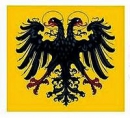


 del.icio.us
del.icio.us
 Digg
Digg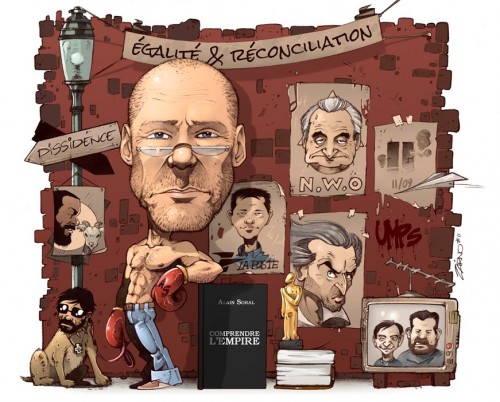






 Le témoignage de George Rémi JUNIOR, le neveu d'Hergé, fils de son frère cadet, un militaire haut en couleur, cavalier insigne, auteur d'un manuel du parfait cavalier, est poignant, non seulement parce qu'il nous révèle un Hergé "privé", différent de celui vendu par "Moulinsart", mais aussi parce qu'il révèle bien des aspects d'une Belgique totalement révolue: sévérité de l'enseignement, difficulté pour un jeune original de se faire valoir dans son milieu parental, sauf s'il persévère dans sa volonté d'originalité (comme ce fut le cas...).
Le témoignage de George Rémi JUNIOR, le neveu d'Hergé, fils de son frère cadet, un militaire haut en couleur, cavalier insigne, auteur d'un manuel du parfait cavalier, est poignant, non seulement parce qu'il nous révèle un Hergé "privé", différent de celui vendu par "Moulinsart", mais aussi parce qu'il révèle bien des aspects d'une Belgique totalement révolue: sévérité de l'enseignement, difficulté pour un jeune original de se faire valoir dans son milieu parental, sauf s'il persévère dans sa volonté d'originalité (comme ce fut le cas...). 
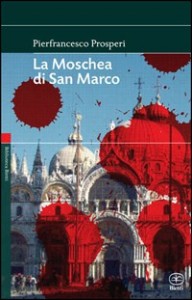
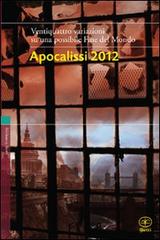





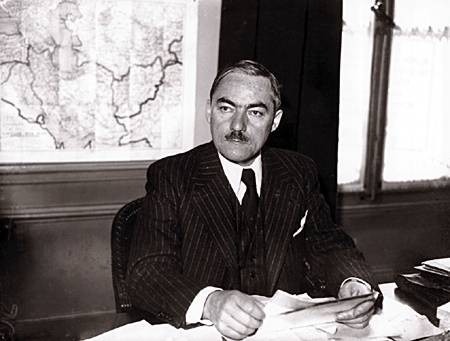
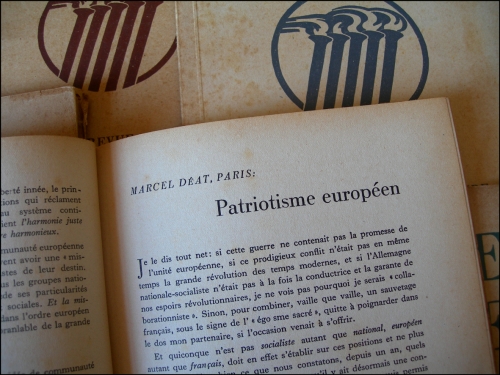
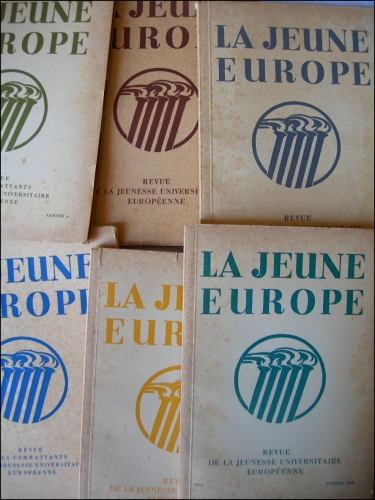
 Perché è necessario ribadire che l’idea socialista è necessariamente legata al concetto di disciplina? A più di quarant’anni dal tristemente famoso ’68, il ribellismo anarco-libertario ha pesantemente influenzato la “forma mentis” del militante di sinistra, e ha condizionato l’azione dei gruppi-movimenti determinati a realizzare il socialismo. La disciplina, intesa come serie di regole, norme ferree ed esercizi, necessari per il corretto funzionamento di qualunque forma di organizzazione politica (partiti) e statale, è fondamento di ogni costruzione sociale. Senza di essa, non è possibile generare e mantenere in vita nulla. In Europa Occidentale il rifiuto e la condanna del modo di produzione capitalistico sono costantemente associati al disprezzo per lo Stato, per la nazione, per la Polizia e per l’Esercito. In realtà non esiste alcuna alternativa politica seria che non prenda in considerazione l’idea di poter generare una nuova formazione statale e potenziare gli organismi di Difesa e tutela dell’ordine pubblico. Idee distorte sono il riflesso di comportamenti individuali altrettanto nocivi e antisociali, tipici della sovrastruttura culturale liberalista dell’ultima borghesia, non dei socialisti. Il passaggio che ha portato molti militanti dal Partito Comunista più forte e numeroso del campo occidentale ai “centri sociali occupati” o a repliche sempre più scadenti di “Democrazia Proletaria”(1), non può essere compreso senza riflettere sull’incapacità cronica del militante o simpatizzante di “sinistra”, di concepire il socialismo come società ordinata e rigidamente organizzata, dove non esistono consumo di sostanze stupefacenti o psicotrope, “l’obiezione di coscienza” o parate dell’orgoglio omosessuale.
Perché è necessario ribadire che l’idea socialista è necessariamente legata al concetto di disciplina? A più di quarant’anni dal tristemente famoso ’68, il ribellismo anarco-libertario ha pesantemente influenzato la “forma mentis” del militante di sinistra, e ha condizionato l’azione dei gruppi-movimenti determinati a realizzare il socialismo. La disciplina, intesa come serie di regole, norme ferree ed esercizi, necessari per il corretto funzionamento di qualunque forma di organizzazione politica (partiti) e statale, è fondamento di ogni costruzione sociale. Senza di essa, non è possibile generare e mantenere in vita nulla. In Europa Occidentale il rifiuto e la condanna del modo di produzione capitalistico sono costantemente associati al disprezzo per lo Stato, per la nazione, per la Polizia e per l’Esercito. In realtà non esiste alcuna alternativa politica seria che non prenda in considerazione l’idea di poter generare una nuova formazione statale e potenziare gli organismi di Difesa e tutela dell’ordine pubblico. Idee distorte sono il riflesso di comportamenti individuali altrettanto nocivi e antisociali, tipici della sovrastruttura culturale liberalista dell’ultima borghesia, non dei socialisti. Il passaggio che ha portato molti militanti dal Partito Comunista più forte e numeroso del campo occidentale ai “centri sociali occupati” o a repliche sempre più scadenti di “Democrazia Proletaria”(1), non può essere compreso senza riflettere sull’incapacità cronica del militante o simpatizzante di “sinistra”, di concepire il socialismo come società ordinata e rigidamente organizzata, dove non esistono consumo di sostanze stupefacenti o psicotrope, “l’obiezione di coscienza” o parate dell’orgoglio omosessuale.
 Das Ministerium hat bisher noch keinen Kommentar zu dem
Das Ministerium hat bisher noch keinen Kommentar zu dem 
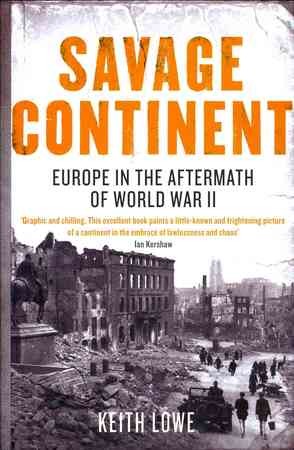 As the author points out, the Second World War did not end in 1945. In large parts of the continent, the contest lasted a lot longer as Polish, Ukrainian, Baltic and Greek partisans battled on in the mountains and forests of Eastern Europe and the Mediterranean. Some of these stories, such as the post-war travails of the Greeks, are well known to Western audiences, but the activities of the Lithuanian, Latvian and Estonian anti-Soviet "Forest Brothers" are not. Perhaps the most arresting fact in this compelling book is that the last Estonian guerrilla fighter, August Sabbe, was killed as late as 1978, trying to escape capture.
As the author points out, the Second World War did not end in 1945. In large parts of the continent, the contest lasted a lot longer as Polish, Ukrainian, Baltic and Greek partisans battled on in the mountains and forests of Eastern Europe and the Mediterranean. Some of these stories, such as the post-war travails of the Greeks, are well known to Western audiences, but the activities of the Lithuanian, Latvian and Estonian anti-Soviet "Forest Brothers" are not. Perhaps the most arresting fact in this compelling book is that the last Estonian guerrilla fighter, August Sabbe, was killed as late as 1978, trying to escape capture.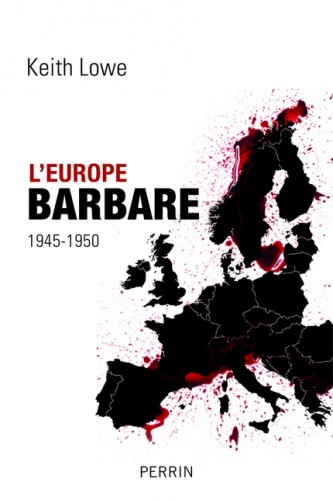 Europe was also in political flux. The war had destroyed the standing of the old elites, and brought the Red Army into the heart of the continent. It was Soviet power, rather than the failure of the ancien regime as such, which underpinned the wave of Communist takeovers in Eastern Europe. Lowe describes the Romanian case in fascinating detail. Hungary, Czechoslovakia, Poland and Bulgaria all met broadly similar fates: red terror, arrests, expropriation of land and property, and executions. In Greece, the boot was on the other foot, as the right-wing government parlayed first British then American help into brutal victory over the communists. Lowe notes the "unpleasant symmetry" caused by Cold War imperatives without in any way denying that "the capitalist model of politics was self-evidently more inclusive, more democratic and ultimately more successful than Stalinist communism".
Europe was also in political flux. The war had destroyed the standing of the old elites, and brought the Red Army into the heart of the continent. It was Soviet power, rather than the failure of the ancien regime as such, which underpinned the wave of Communist takeovers in Eastern Europe. Lowe describes the Romanian case in fascinating detail. Hungary, Czechoslovakia, Poland and Bulgaria all met broadly similar fates: red terror, arrests, expropriation of land and property, and executions. In Greece, the boot was on the other foot, as the right-wing government parlayed first British then American help into brutal victory over the communists. Lowe notes the "unpleasant symmetry" caused by Cold War imperatives without in any way denying that "the capitalist model of politics was self-evidently more inclusive, more democratic and ultimately more successful than Stalinist communism".


 Tout le monde connaît ces avions de papier que les lycéens jettent dans la rangée centrale de la classe quand ils s’ennuient. Le fuselage de l’avion était constitué par l’Esplanade des Invalides. Les ailes faisaient un triangle, dont les pointes étaient le pont de la Concorde, le pont des Invalides et l’extrême avancée, sur la rive droite, de l’avenue Nicolas II.
Tout le monde connaît ces avions de papier que les lycéens jettent dans la rangée centrale de la classe quand ils s’ennuient. Le fuselage de l’avion était constitué par l’Esplanade des Invalides. Les ailes faisaient un triangle, dont les pointes étaient le pont de la Concorde, le pont des Invalides et l’extrême avancée, sur la rive droite, de l’avenue Nicolas II. 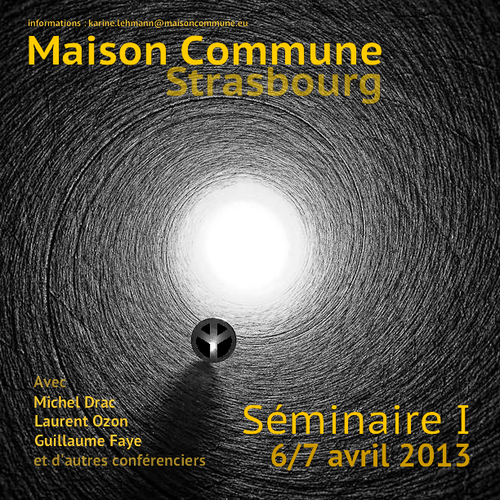

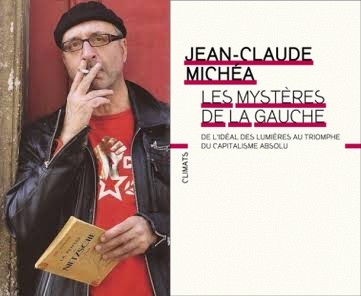


Ex: http://orientalreview.org/